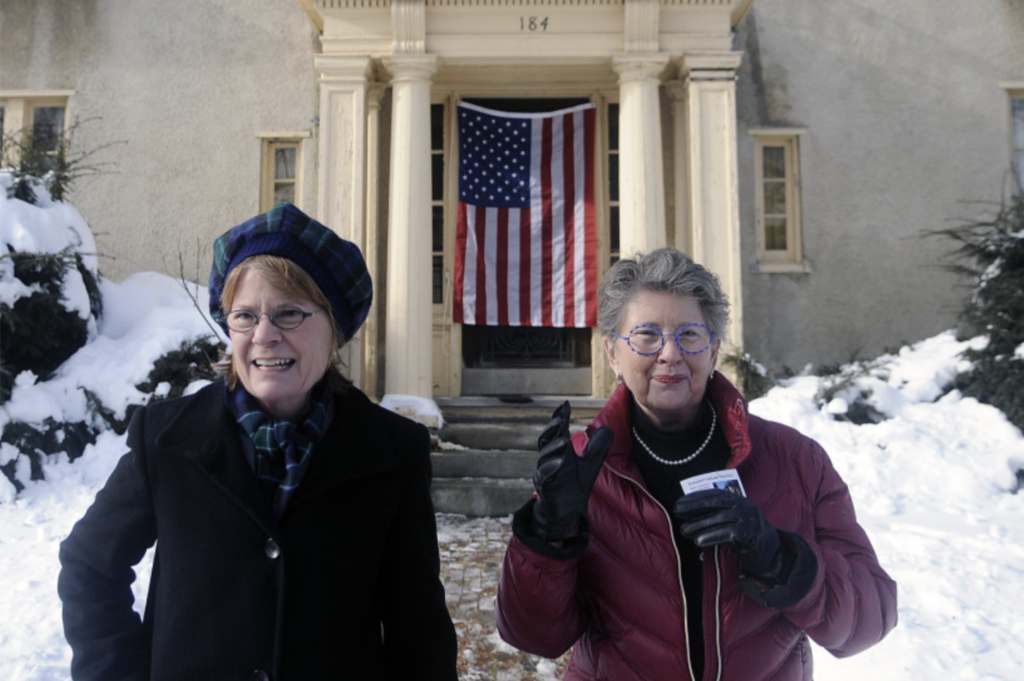A new museum dedicated to the First Amendment will have artifacts from the journalism industry, exhibits on First Amendment champions, and newspapers and other publications by the Gannett family and other Maine publishers on display.
But organizers say the museum in the 1911 ornate but run-down former Gannett family home beside the Blaine House isn’t really going to be about the exhibits.
“It will have some artifacts, but it’s really about the ideas,” Genie Gannett said of the concept.
The museum in the Gannett House at 184 State St. in Augusta is scheduled to open in late 2017.
Genie Gannett, president of the Gannett House Project, and her sister Terry Gannett Hopkins, vice president of the organization, announced Tuesday the purchase of the building by the Gannett House Project, through the Pat and John Gannett Family Foundation, which is named for their parents.

They said it will serve as a “concept museum” about the First Amendment and the freedom of religion, speech, and the press, and the rights of people to assemble peaceably and to petition the government.
“The role of the Gannett House is to inspire the next generation and educate them and instill that appreciation for the First Amendment,” Hopkins said.
The Gannett House Project recently acquired the building from the state for $378,000 and plans to put about $1.5 million of private money into turning it into an interactive tribute to the First Amendment. The house, most recently used by the State Planning Office, was originally the home of late Guy P. Gannett, a newspaper owner and freedom of speech defender.
The yellow stucco Mediterranean Revival building was built in 1911 by publishing magnate William H. Gannett as a wedding gift to his son, Guy P. Gannett, who founded the Guy Gannett Publishing Co. The company grew to include the Kennebec Journal, Morning Sentinel and Portland Press Herald newspapers and WGAN-TV – later WGME – and WGAN radio. William H. Gannett founded Comfort magazine, the first American periodical to reach a circulation of 1 million.
The museum will have displays telling the story of First Amendment champions, including Elijah Parish Lovejoy and Harriet Beecher Stowe, will explain the First Amendment and the rights it protects, and have a digital archive of historic Maine newspapers.
Earle Shettleworth Jr., state historian, said the building itself is a significant property, part of the State House complex, and part of an area listed on the National Register of Historic Places.
“To assure the future of this house is very important,” Shettleworth said, noting the building’s unusual-for-Maine stucco walls and grand, modern and fashionable styling made a dramatic statement when it was built. “To place it on State Street, right next to the Blaine House, was making an even further statement of, really, the stature of the Gannett family and stature of their newspapers.”
The Gannett family sold the company – by then called Guy Gannett Communications – in 1998. Guy P. Gannett sold the house in the 1920s, when the family moved to Cape Elizabeth.
The 5,000-square-foot house, once grand, has deteriorated over the years, especially since it was left vacant, in 2010, when the State Planning Office moved out. The state acquired it in the 1970s.
Genie Gannett said the first steps will be to make sure the building is stable and hire a planner to design the museum. It will need extensive restoration and renovation, she said.
She said her group hopes to have the place ready to open in late 2017, which she said is an ambitious timeline.
She said it had hoped originally to have started sooner, but the process of buying the property from the state took longer than expected.
Originally published by Keith Edwards for the Portland Press Herald.

